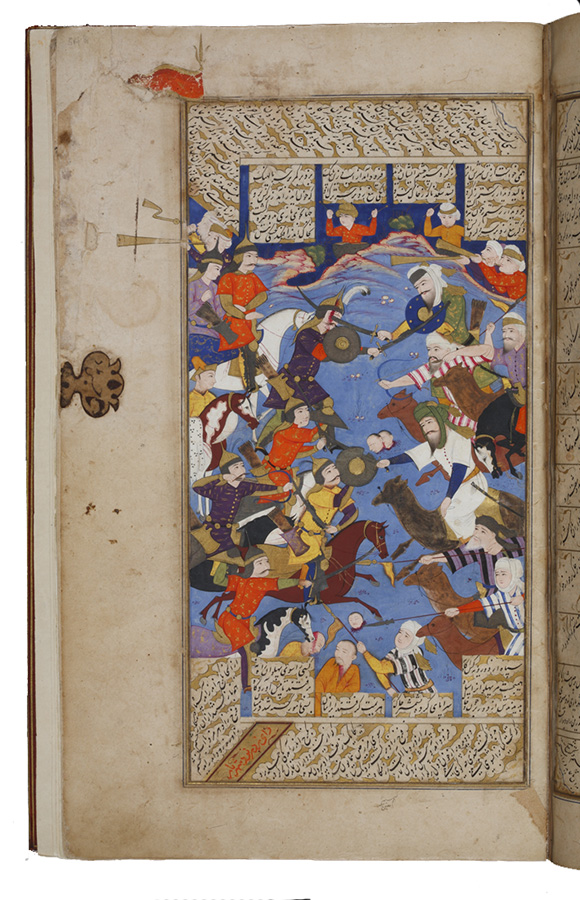Manuscript B, no. 9-084 (David folio 350a)
The Battle of Saʾd-e Vaqqas and Rostam-e Hormozd
Location: The David Collection, Copenhagen, Denmark, #217/2006, folio 350a.
Page: 35.2 x 21.8 cm.
Painting: 23.2 x 14.3 cm. (Scaled)
Text area: 28.7 x 14.3 cm. (Scaled)
Signature in the center of the lower margin: raqam-e kamina moʿin-e moṣavver.
The last chapter of the Shahnama recounts the reign of Yazdegird, who was ultimately defeated by the Muslim Arabs. This illustration depicts Saʾd, the son of Vaqqas, who was sent by the caliph ʿOmar to attack the Iranians. Yazdegerd appointed Rostam, the son of Hormozd, to lead the army against the Arabs. After waiting in vain for an auspicious day to start the battle, Rostam and his forces took on the Arabs. For three days they fought in the desert. Rostam and Saʾd battled on a mountainside, both eventually on foot. At first, Rostam had the upper hand, but when a cloud of dust obscured his vision, Saʾd attacked him with his sword, slaying him with a mighty blow of the sword to his head.
In this painting, Saʾd is at the end of a line of Arabs on camelback, wearing a green-and-gold robe and slashing the head of Ruostam on the left. Despite incorporating many elements used throughout manuscript, such as the groom at the left with his trademark hat, Moʿin has adhered closely to the description of the battle in Ferdowsi's text. Perhaps faithfulness to the narrative was necessary in order to avoid seeming ambivalent or too pro-Iranian on the subject of the victory of the Muslim Arabs over the Zoroastrian Iranians.
For another illustratiopn of the same subject by Moʿin see ms.D, f223
Painting references:
Canby_ Journal_2010, p. 76-77 no. 42 and p.109, fig.41.
Text references:
Warner, IX, p.84.
Mohl, VII, p.365.
Levy, p.417.
Davis, Shahnameh_2007, pp.841- 42.
Photo: Permille Klemp. Courtesy of The David Collection, Copenhagen
Sheila R. Canby
Last Updated: September 9, 2014 | Originally published: 2010
